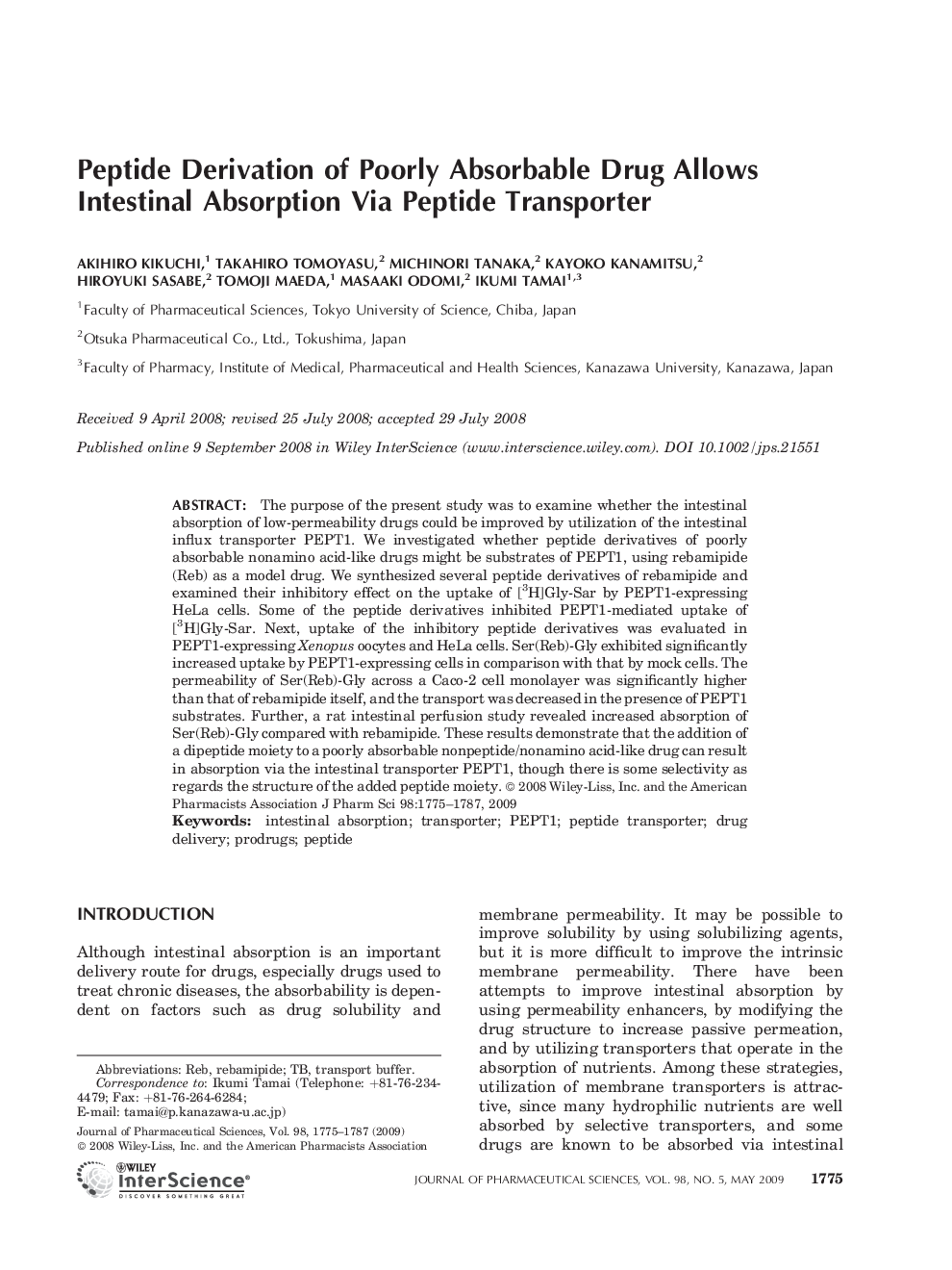| Article ID | Journal | Published Year | Pages | File Type |
|---|---|---|---|---|
| 2487192 | Journal of Pharmaceutical Sciences | 2009 | 13 Pages |
Abstract
The purpose of the present study was to examine whether the intestinal absorption of low-permeability drugs could be improved by utilization of the intestinal influx transporter PEPT1. We investigated whether peptide derivatives of poorly absorbable nonamino acid-like drugs might be substrates of PEPT1, using rebamipide (Reb) as a model drug. We synthesized several peptide derivatives of rebamipide and examined their inhibitory effect on the uptake of [3H]Gly-Sar by PEPT1-expressing HeLa cells. Some of the peptide derivatives inhibited PEPT1-mediated uptake of [3H]Gly-Sar. Next, uptake of the inhibitory peptide derivatives was evaluated in PEPT1-expressing Xenopus oocytes and HeLa cells. Ser(Reb)-Gly exhibited significantly increased uptake by PEPT1-expressing cells in comparison with that by mock cells. The permeability of Ser(Reb)-Gly across a Caco-2 cell monolayer was significantly higher than that of rebamipide itself, and the transport was decreased in the presence of PEPT1 substrates. Further, a rat intestinal perfusion study revealed increased absorption of Ser(Reb)-Gly compared with rebamipide. These results demonstrate that the addition of a dipeptide moiety to a poorly absorbable nonpeptide/nonamino acid-like drug can result in absorption via the intestinal transporter PEPT1, though there is some selectivity as regards the structure of the added peptide moiety.
Related Topics
Health Sciences
Pharmacology, Toxicology and Pharmaceutical Science
Drug Discovery
Authors
Akihiro Kikuchi, Takahiro Tomoyasu, Michinori Tanaka, Kayoko Kanamitsu, Hiroyuki Sasabe, Tomoji Maeda, Masaaki Odomi, Ikumi Tamai,
